MHR

MANUFACTURED HOUSING REVIEW
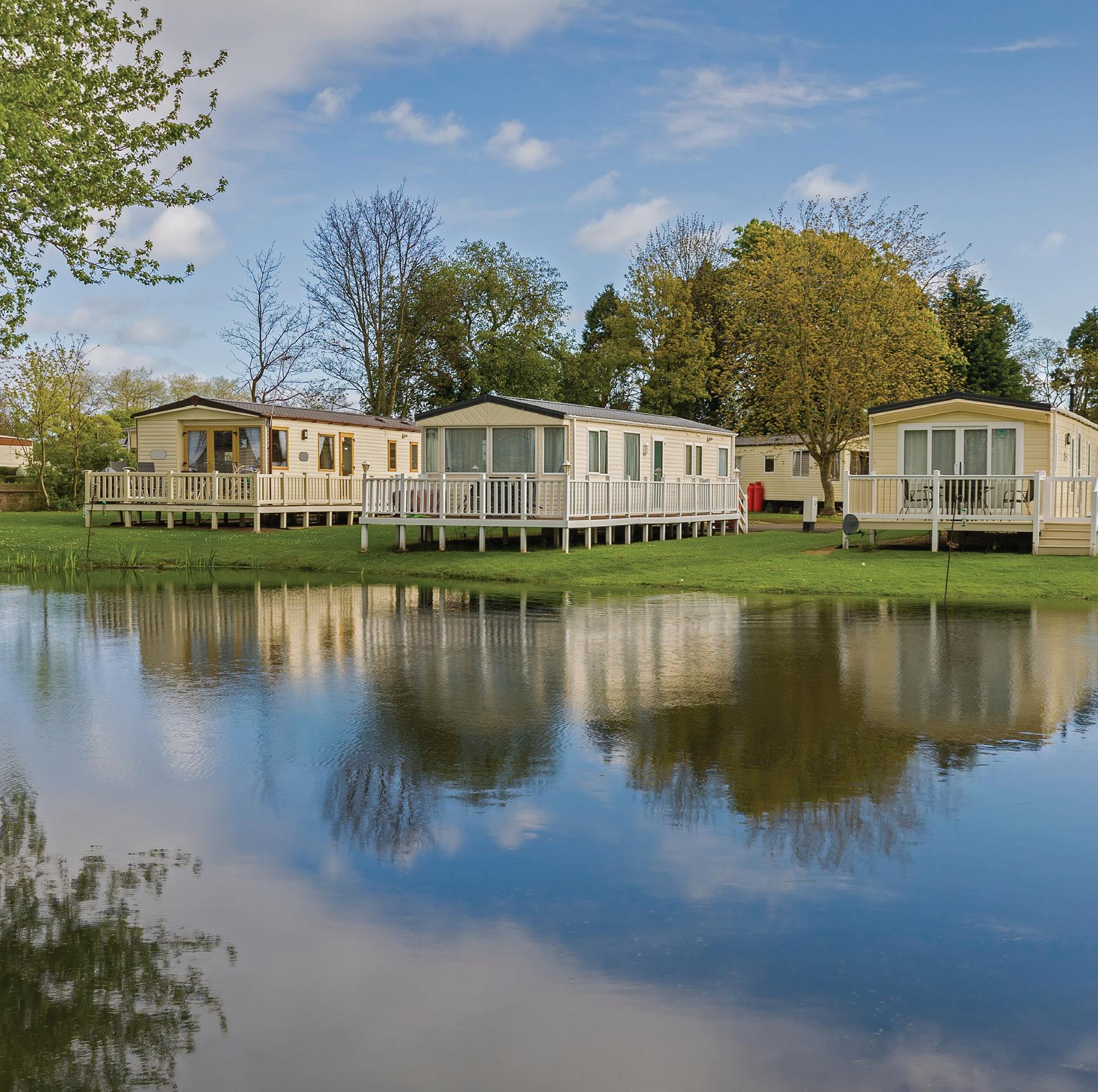
News and educational articles to help you run your business in the manufactured home industry.
IN THIS ISSUE:
Supply-Chain Disruptions Worsen for Manufactured Housing, Higher Prices Ahead Preventing Living Trust and Estate Planning Mistakes
Manufactured Housing is a Great Choice for Senior Housing ... and much more!
Sponsored by:

2021 | Quarter 4
Table of Contents Top Ten Warning Signs of a Potential Bad Tenant 3 By Carolyn Gibson Managing Your MHC’s Insurance Policy 5 By Kurt D. Kelley, JD Supply-Chain Disruptions Worsen for Manufactured Housing, Higher Prices Ahead 6 By David Jones and Bryan Pope First Trust Monday Morning Outlook 7 By Brian Wesbury, Robert Stein, Strider Elass, Andrew Opdyke, CFA, Bryce Gill Top Ten’ Lame Excuses for NOT Supporting The Manufactured Housing Council 8 By J.D. Harper Preventing Living Trust and Estate Planning Mistakes 9 By Michael K. Elson Lou Serro Elected President of American Insurance Alliance 11 Appeals Court Halts Rollout of Federal Vaccination Policies for Businesses 13 By The Louisiana Manufactured Housing Association Five MHC Financing Facts 14 By Art Tuverson Manufactured Housing is a Great Choice for Senior Housing 15 By Leni Davenport Harnessing The 80/20 Rule 16 By Frank Rolfe Employment Practices Liability 19 By The Risk Management Team of Haylor, Freyer & Coon, Inc. Does a Pit Bull or Chihuahua Bite Hurt More? 20 By Due Diligence Partners Debunking a Rule of Thumb 22 By Mark Simpson Farmers Specialty | RV Cold Weather 25 By Jim Gontjes How Appraisers Are Growing Manufactured Housing 27 By Paul Barretto
Top Ten Warning Signs of a Potential Bad Tenant

Let’s assume you are already doing the basic screening duties. Everyone fills out a rental application. You check the credit report, the employment and bank account information, landlord references, and the applicant has shown the ability to pay the rent. So far, the rental candidate shows good potential for your vacant apartment.
Signs are there that you are talking to a would-be problem applicant. Sometimes, we ignore them because everything else about the applicant appears to be okay. Other times, we are in such a hurry to get the unit back on a paying basis, we go ahead and rent to the person anyway. When your applicant begins to make a series of statements or excuses why he or she cannot comply with your requests for information, you may have a potential bad renter. You need to probe deeper and ask follow up questions.
Here are the top ten warning signs from rental applicants that should cause you to examine further.
1. “Why do I have to fill out an application?” Uh-oh, we have a difficult applicant. And, guess what? This question will most likely come from one of your closet friends or relative. Do not start your vacancy process by playing favorites or catering to those who do not want to follow the rules. Beware the applicant that is surprised he or she has to comply with your renting requirements. The answer to the question is, “Because, my property is my business, and I require everyone to complete a rental application”. It is the best way to treat everyone as equal, and complies with state and federal fair housing legislation. You will also appreciate being able to have something in writing to review and compare information from one candidate to another. Here is the definitive reason why everyone should fill out a rental application: It is your
By Carolyn Gibson
policy, your property, and your rules. If a person does not have a problem giving a credit card company or a car company his or her personal business to get credit, the rental applicant should not have a problem filling out a rental application to get an apartment. Applicants have no problem at all filling out an employment application. Your apartment is at the same level of business.
2. “My mother (father, aunt, sister, etc.) said that I wouldn’t have to go through the regular process.” The presumption is that you will give preferential treatment. It may also signify the applicant has problems that he or she does not want you to see. Let your friends and relatives know that you are serious about your apartment and building. If you begin a tenancy by not following your own policies and procedures, they will remind you of that fact later when there is a problem. Make everyone go through the process from beginning to end. Your favorite cousin may owe everyone in town. Your life long friend may have a [serious] criminal record he or she is not proud to reveal. Tell them you are making everyone do the same thing, to keep things honest and equal.
3. “I need an apartment for next month.” Whoa, rental applicant, slow down. Beware the applicant in a hurry. You want to get the apartment rented as quickly as possible. Still, do not allow yourself to be rushed through your own verification process by a rental applicant. There are applicants who are very good at imposing their emergency situation on an owner or manager. Especially if an applicant has children, he or she will encourage an owner or manager to rent before all of the paperwork and verifications are completed. If you do not wait, you may subsequently find that the emergency situation was actually an impending eviction. But too late – the tenant is now in your apartment.
- 3 -
Top Ten Warning Signs of a Potential Bad Tenant Cont.
4. “I’m living with my girlfriend, and I pay her the rent”. This could indicate he was not on the lease. Ask plenty of questions. Does the owner or manager of the apartment know he is living there? Why does he need an apartment? Has he ever had his own apartment? Has a restraining order been filed on him? What happened between him and his girlfriend? How did he pay his share of the rent? Can he prove he ever paid rent? Check this person out very carefully before you give him keys to your apartment.
5. “I don’t have all my information with me. Can I take the application home?” Always use a rental application to lease your units, and keep them with you. Keep track of them, how many you have, how many you gave out, etc. If the applicant is serious about the apartment, he or she should be prepared to complete an application after the unit is shown. The candidate can always return. Sometimes the person may be illiterate, or have a reading problem. Help each applicant who indicates he or she needs it. High-risk applicants depend on being able to talk their way into getting an apartment.
6. “I intend to pay three months of rent in advance if I am selected”. There are people who will try to take advantage of your eagerness to rent your apartment so that you can start to get money to help pay the mortgage. Do not allow a rental applicant to wave money in your face to get you to change or rush through your process. What happens after the three months? Does the application and bank account statement confirm that he or she has this much money, and more for the future rent? Remind the applicant that he or she will have to complete your tenant selection process before you make a final decision. Also, inform the person that you have more than one application under consideration.
7. “I want to put a deposit on the apartment in case I am selected”. This is offered by an applicant in order to impress, and gain a competitive advantage for the apartment. Again, do not give into money waved in your face. If the candidate is selected, all you want is the rent paid on time every month, and obedience to the rules of the lease. If you accept application processing fees, pre-selection checks or money orders and put them in an envelope, now you have other peoples’ money in your home. Some applicants cannot afford to pay an application fee. Some states do not allow owners to take an application fee or deposit. Check the law in your state before you accept any rental processing fee money. Most of the time, your search for a tenant will go smoothly. Occasionally, an applicant may cause you to feel uncomfortable. He or she will show you a few signs during the decision process that could mean future trouble. There are also definite signs that perhaps you should take a pass on a person. These signs do not have
to be part of your intuition. Rather, they are very specific and, often intimidating signs that you should take a pass on the applicant.
8. The rental applicant questions every decision or part of your application process. Every discussion becomes a debate between what you are doing regarding your process, and what she thinks you should be doing. The applicant tries to rush you through the process, constantly calling you for an answer, despite saying repeatedly you will get back to her when you have completed your course of action. The applicant appears to have a short temper, especially when you ask specific questions.
9. The applicant makes you feel nervous whenever he or she is around you. You feel severely intimidated by the applicant because he tends to yell or raise his voice when hearing something he doesn’t like. He stands over you or very close to you when making a point or points his finger in your face when talking, etc. He doesn’t want to give you information you have a legal right to have to make informed decisions. You do not have to rent to a person who makes you feel uncomfortable or out of place in your own home. You should make detailed notes of the dates and times you had these types of encounters, and include it in their file folder.
10. You smell alcohol on the applicant’s breath each time you meet. Or, the applicant appears to be under the influence of something more than alcohol – eyes are dilated, the person acts fidgety, can’t seem to stay still, slurs his words, etc. Think about the kind of professional relationship you want with your future tenant. One or more of these signs and its intensity should cause you to think twice about the candidate. You want a tenancy period over a number of years that will be free from stress, questioning of your authority or rules, and constant bickering. If the applicant and you aren’t getting along before you even complete the process, it will not get better after he or she moves in. Avoid those candidates, and move on to those applicants that have a proven record of social, financial, and long-term stability.
Article Source: http://EzineArticles.com/?expert=Carolyn Gibson
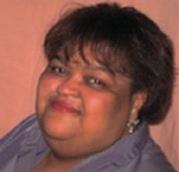
- 4 -
Property Manager Carolyn Gibson writes about homeownership, property management, being a tenant, landlording, and having a property management business. Her books, How to Pick the Best Tenant and Secrets to a Successful Eviction can be found at her web site and at http://www. Amazon.com
Managing Your MHC’s Insurance Policy


Among a Manufactured Home Community (MHC) owners most important assets are its insurance policies. When a crisis occurs, proper insurance may save the MHC. To make sure your MHC insurance policy works for you, you must accurately list the Named Insured(s) on your general liability and property insurance policies. The Named Insured(s) is the owner of the policy. It has both full rights to coverage and full obligations to pay premiums.
The following are examples of who should be a Named Insured for your MHC insurance policies:
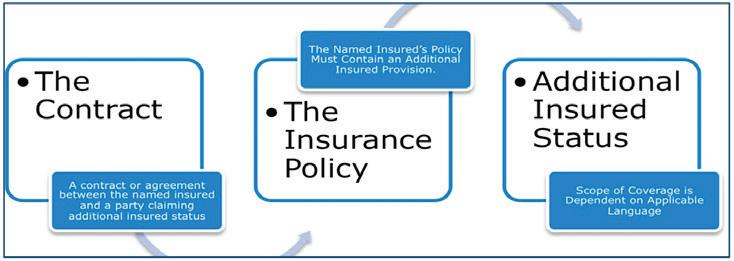
1 The MHC owner whether an LLC, Corporation, Trust, or Individual,
2 The MHC Management Company, but only if it’s owned by the same underlying owners as the MHC Owner, AND
3 The owner of rental homes in the MHC whether an LLC, Corporation, Trust, or Individual
General Liability insurance policies automatically include coverage for Officers and Directors of Corporations, Managers and Members of LLC’s, Partners of Partnerships, and the employees of all. Thus, none needs to be listed as a Named Insured. Worse yet, naming any of these as a Named Insured can unintentionally extend coverage to their Non-MHC related business endeavors. This can cause additional premium to be owed for nonMHC operational risks and burden the MHC with loss history unrelated to MHC operations. For example, don’t name Clayton Homes, Inc. as a Named Insured on your general liability insurance policy else you could be charged the cost for insuring all Clayton Homes, Inc.’s operations. Even Kevin Clayton wouldn’t recommend you do that.
MHC Management sometimes receives requests to name nonowned businesses it does business with as “Additional Named Insureds” on the MHC’s general liability or property insurance policies. “Additional Named Insured” status is reserved for non-owned partner companies. Lenders, companies that hire you to work for them on a project, and third party owned
By Kurt D Kelley, J D
property management companies are examples of entities that are often properly included as “Additional Named Insureds” under an MHC’s general liability insurance policy.
Knowing what’s good for the goose is good for the gander, MHC owners should ask those they hire to perform significant work at their MHC to name them as an “additional named insured” on their general liability insurance policy. An example would be if you hire “Buck’s Utility Service, Inc.” to upgrade some utility lines in the MHC. To protect your MHC from liability caused by Buck’s excavation and line placement operations, have Buck’s name your MHC as an additional insured on Buck’s general liability insurance policy. This properly places the risk of loss primarily on Buck’s as the hired professional service provider. If a major loss occurs, your MHC will likely be sued, however, Buck’s will have to pay for legal defense and indemnify you.
Kurt D. Kelley, J.D. President, Mobile Insurance Kurt@MobileAgency.com

 www.mobileagency.com
www.mobileagency.com
President of Mobile Insurance, an agency specializing in insurance for manufactured home communities and retailers. Named top commercial insurance agency by American Modern Insurance Group. Member of numerous insurance companies’ policy development and advisory teams. One of largest manufactured home specialty agencies in the country. 2017- Present Founder and Publisher of the Manufactured Housing Review, an industry publication dedicated to Manufactured Home Industry professionals. www.manufacturedhousingreview.com.

- 5 -
Supply-Chain Disruptions Worsen for Texas Manufactured Housing, Higher Prices Ahead
COLLEGE STATION, Tex. (Texas Real Estate Research Center)
Supply-chain disruptions accelerated sharply, according to the latest Texas Manufactured Housing Survey (TMHS), and conditions are expected to worsen through first quarter 2022. Raw-material prices were largely unchanged in October, but pressure is building upstream and price hikes are expected.
“Material costs calmed for manufacturers during the third quarter allowing them to pause price increases for finished homes,” said Wesley Miller, senior research associate with the Texas Real Estate Research Center at Texas A&M University (TRERC). “That relief appears to be temporary amid surging supply-chain disruptions and rising labor costs.”
Despite supply bottlenecks, manufactured-housing production increased for the fifth consecutive month, and the TMHS production index reached its highest level since February. Manufacturers expect those gains to continue and should chip away at backlogs that have built up since the start of the COVID-19 pandemic.
“By streamlining product offerings, expanding operations, and staffing up despite a tight labor market, HUDcode manufacturers continue to increase the number of homes they’re building this year,” said Rob Ripperda, vice president of operations for the Texas Manufactured Housing Association. “Supply-chain linked price increases could put downward pressure on demand, but the TMHS respondents are expecting sales to increase over the next six months.”
“Supply chains are being hit from multiple sources at once,” said Dr. Harold Hunt, TRERC research economist. “Ships,
 By David Jones and Bryan Pope
By David Jones and Bryan Pope
trucks, and rail transportation are falling short of needed capacity to clear bottlenecks. Unfortunately, forecasts project shortfalls well into next year.”
On the labor front, manufacturers increased hiring despite fewer prospective employees. While the TMHS labor-supply index stabilized after five consecutive months of decline, manufacturers expect conditions to worsen considerably through first quarter 2022. These obstacles elevated
the level of uncertainty surrounding the industry and have pushed plants into higher capital expenditures in attempts to streamline operations.
Despite these challenges, manufacturers managed to increase business activity and expect to do so in coming months. The industry outlook remained favorable, but optimism waned for the first time in at least 16 months.
Funded primarily by Texas real estate licensee fees, the Texas Real Estate Research Center was created by the state legislature to meet the needs of many audiences, including the real estate industry, instructors, researchers, and the public. The Center is part of Mays Business School at Texas A&M University.

David Jones d-jones@tamu.edu
Bryan Pope b-pope@tamu.edu
979-845-2039
979-845-2088
Thousands of pages of data are available at the Center’s website. News is also available in our twice-weekly electronic newsletter RECON, our Real Estate Red Zone podcast, our daily NewsTalk Texas feed, on Facebook, on Twitter, on LinkedIn, and on Instagram.
- 6 -

Top Ten’ Lame Excuses for NOT Supporting The Manufactured Housing Council
by J.D. Harper
(With Apologies to TV’s David Letterman)
10. Binge watching Squid Game on Netflix...
9 Broke your ‘check-signing hand’ punching the wall at the end of Arkansas / Ole Miss game
8 Waiting for Sen Kyrsten Sinema to agree to something or other
7 Busy working out to reduce the double chin that your COVID mask has been hiding since Spring of 2020
6 ‘Bet the Farm’ that the LA Dodgers would win the World Series
5 Too confused by the whole Facebook-to-Meta name change thing
4 Thought the ‘Delta Variant’ was the name of a new BBQ joint in Memphis
3 Invested too much in ‘Clemson Tigers -2021 NCAA National Champs’ merch
2 Prepping for ’No Shave November’
1 I DON’T LIKE POLITICS!
LOUISVILLE MANUFACTURED HOUSING SHOW POSTPONED
The Louisville Manufactured Housing Show has been postponed until 2023.
The largest indoor product show of its kind, The 2022 Louisville Manufactured Housing Show had been scheduled for January 19-21 at the Kentucky Exposition Center in Louisville, KY The Midwest Manufactured Housing Federation Board of Directors recently announced the decision to postpone the event “in order to ensure the safety of our exhibitors and attendees amidst the ongoing COVID-19 pandemic, as well as to accommodate our manufacturing and supplier partners working to meet unprecedented product demand” Exhibitors and attendees with questions regarding the show’s postponement contact Trisha Le at (770) 587-3350

Preventing Living Trust and Estate Planning Mistakes

If you own real property or other valuable assets, there is great benefit in creating and maintaining a quality estate plan. With proper guidance, drafting, and implementation, your estate plan will be effective to avoid probate, unnecessary capital gains and estate taxes, and court control of your assets at your death or in the event of incapacity. Other than procrastinating until it’s too late and, therefore, not having a living trust at all, the following is a list of some common estate planning mistakes.
Failing to Keep Your Trust Up to Date

Many living trusts created before 2008 contain a mandatory requirement to divide the trust into two or more sub-trusts upon the death of the first spouse. These trusts were commonly utilized to reduce or eliminate estate taxes by taking advantage of the then current estate tax exemption laws. However, many have become obsolete for families whose assets are under the current (2021) estate tax exemption of $23.4 million. For example, upon the death of the first spouse in an outdated married couple trust, a rental property had to be placed into an irrevocable sub-trust. This property appreciated to a $1.15M fair market value gain, between the death of the first spouse and the passing of the surviving spouse. This gain was great for the heirs, but due to the outdated trust and changes in the tax laws, the rental did not receive the appropriate step-up in basis. Therefore, the heirs had to pay capital gains tax on the entire $1.15M, which could have been completely avoided had the trust been appropriately amended.
Inaccurate Assumptions
Misconceptions may lead some people to wrongly believe that a living trust is not necessary. For example, erroneously believing that outright gifts during one’s lifetime (such as placing your adult child on the deed to your home as a Joint Tenant) is a good way to avoid probate. The fallacy with this approach is that once your child
 By Michael K Elson
By Michael K Elson
becomes a co-owner of the house, your child could force a sale against your wishes. Additionally, your child’s creditors (from lawsuits, bankruptcy, or divorce) could take the home from you to satisfy your child’s debts. Furthermore, assets gifted while you are alive loses the benefit of receiving a steppedup basis at your death, leading to unnecessary capital gains taxes. Another common misconception is believing that a Will functions as a living trust. However, unlike a living trust which entirely avoids probate, a Will must go through probate which is expensive and takes two or more years in probate court. Furthermore, a Will is of no use in the event of temporary or permanent incapacity. Durable powers of attorney are needed to handle property, finances, and medical decisions during incapacity. Otherwise, the expense and hassle of a court ordered conservatorship may be necessary.
Trying to do it Without an Attorney
Relying on the advice of non-attorneys for estate planning and trust drafting is a serious mistake. Omissions or technical errors may go unnoticed, until after you die. You are taking great risk not having your living trust prepared by an experienced trust attorney. If the trust is not drafted and properly funded, it will likely be worthless or create unintended negative consequences when you die. Furthermore, online software and legal document services have no legal duty to make sure the necessary provisions are included and properly tailored to your circumstances. Also, they may not be California specific, nor up-to-date, and often fall into the category of “one-sizefits-all” estate planning. These omissions fail to address your specific needs, goals, assets, family dynamics, or taxes. For example, special considerations apply for owning a business or vacation home, blended families, children with special needs, or marriage to a non-citizen.
- 9 -
Preventing Living Trust and Estate Planning Mistakes Cont.
Improper Funding of the Trust
It is a mistake to believe your estate plan is complete as soon as your estate planning documents have been signed. To avoid probate, most assets must be transferred to the trust. Leaving out assets can defeat the purpose of your estate plan. This includes ensuring that financial accounts are owned by the trust. Funding your living trust with bank/ investment accounts, business interests, and real estate is critical, as is designating the correct named beneficiaries of your life insurance and retirement accounts.

Another funding mistake can arise if a lender bank asks you to temporarily transfer your home out of the trust in order to help the bank facilitate a refinance. In many instances, I have seen where owners have failed to transfer the property back into the trust. This can result in the property having to go through the entire probate process. Additionally, if you own an LLC, it is important not to overlook the transfer of your LLC interests into your living trust.

Drafting Issues/Wrong Type of Trust
When preparing a living trust, a failure to make a careful distinction between percentage allocations versus specific gifts, can lead to beneficiary distribution problems. For example, if leaving specific dollar amounts to a specific beneficiary, the funds may not later exist or there may not be enough funds to distribute the desired amount to the beneficiaries. Or, a specific real property bequeathed in the trust may have been sold, or be worth far more or less than when the trust was created. Percentage allocations often alleviate these potential problems.
Another mistake can be made by not designating whether inherited assets should go to the children of a predeceased beneficiary, or to other named beneficiaries who do survive. Another may be failing to regulate over time the distribution of assets to heirs who are prone to mismanagement or may quickly squander their inheritance. Most trusts should specifically contain provisions to allow a successor trustee to use the trust assets for young children’s health, education, maintenance, and support, until such children have reached the appropriate age. Also, once your children have become
responsible adults, your trust should be amended if someone other than your child is named as successor trustee.
Selection of the right provisions in your trust is critical. In some cases, a mandatory A-B trust split, after the death of a spouse, may be beneficial for reducing the estate tax. However, as illustrated in the scenario earlier in this article, smaller estates could suffer from a loss of step-up in tax basis after the death of the surviving spouse if there had been an unnecessary mandatory split. A flexible option is to utilize an A-B Disclaimer trust, which allows the surviving spouse to delay the decision of whether or not to split the trust, until nine months after the death of the first spouse. This provides time to ascertain estate tax rates, exemptions, values, and goals.
Preventing Miscellaneous Problems
Once you have created a good living trust estate plan, care should be exercised to ensure your heirs have access to the documents. Although not mandatory, it’s a good idea to mention to some of your beneficiaries or your successor trustee that you have a trust and where it can be located. It’s recommended to create a backup copy in case the original is ever misplaced, lost, or destroyed. An electronic PDF copy is fine and facilitates easy delivery to any desired recipient.
Michael K. Elson is a prominent Trusts & Estates attorney located in Encino and Valencia and provides estate, business and asset protection planning, including trusts, LLCs, corporations, probate, and trust administration. Mr. Elson provides estate planning for income property owners. He may be reached at www.living-trust-attorney.com or by calling (818) 763-8831 or emailing michael.k.elson@gmail.com. This article is a broad overview of some estate planning options. Since each person’s circumstances are unique, and there are many intricate exceptions and periodic changes in the law, the mere reading of the material herein does not create an attorney/client relationship between the author and the reader.

- 10 -
Lou Serro Elected President of American Insurance Alliance
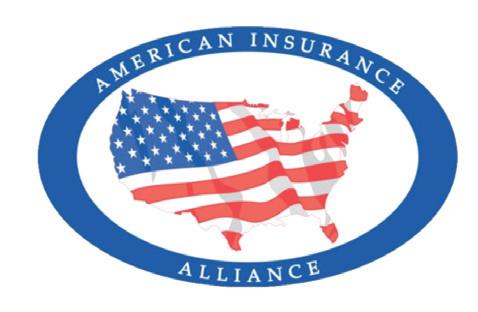
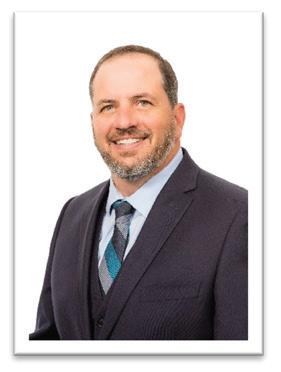
Lou Serro, Senior Vice President of Brown & Brown Insurance of Arizona in Phoenix, has been elected President of American Insurance Alliance (AIA), effective January 1, 2022. Lou has been active in the manufactured housing insurance industry for many years and has served as Vice President of AIA during 2021.
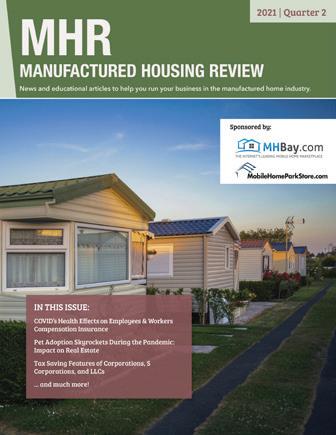
Kurt Kelley, JD, President of Mobile Insurance, The Woodlands, TX has been elected Vice President. Susan DeLeon, President of Bob Wallin Insurance, Bellingham, WA will be serving the Alliance as Secretary/Treasurer. Dan Greenfelder, President of Greenfelder Insurance Services, North Canton, OH will continue to serve on the board as Immediate Past President.
American Insurance Alliance is a group of the leading independent insurance agencies in the country specializing in Commercial Manufactured Housing Insurance for Retailers and Communities. AIA was formed in 1999 to create a national presence within our niche. This national presence and the ability to share underwriting and product information has enabled AIA to grow as the industry leader in providing products and services to the manufactured home industry.

AIA members and their agencies include Lou Serro, Brown & Brown of AZ, Scottsdale, Arizona; Dan Greenfelder, Greenfelder Insurance Services, Inc., North Canton, Ohio; Sean Dalton, Haylor, Freyer & Coon, Inc. of Syracuse, New York; Mark Barrett, HUB International Midwest, Bloomfield Hills, Michigan; Rick King, King Insurance Brokerage, Omaha, Nebraska; Kurt Kelley, Mobile Insurance, The Woodlands, Texas; Ed Purvis, Purvis Insurance Agency, San Antonio, Texas; Paul Simson, Towne Insurance, Raleigh, North Carolina; and Sue DeLeon, Bob Wallin Insurance, Bellingham, Washington.
For more information on AIA and its members, please visit www.AmericanInsuranceAlliance.com. Or contact Kathleen Bianculli kbianculli@AmericanInsuranceAlliance.com.
- 11 -
SUBSCRIBE! Manufactured Housing Review Magazine www manufacturedhousingreview com staff@manufacturedhousingreview com
TEXCO 2022 PARKFLATION


RISING VALUES ARE CHANGING EVERYTHING
MHC OWNERS JOIN US FOR A ONE-DAY POWER CONFERENCE FILLED WITH FAST, POIGNANT, TOPICAL PRESENTATIONS.









THURSDAY, JANUARY 13 2022 | 9–5PM






Hosted at The Woodlands Waterway Marriott Hotel & Convention Center in The Woodlands, Texas. Receive a discounted room rate when you mention “texco”.

Limited tickets available through eventbrite at texcoevent.com


POWER PRESENTATIONS | DRINKS + APPS | VENDOR BOOTHS
Appeals Court Halts Rollout of Federal Vaccination Policies for Businesses
The Fifth Circuit Court of Appeals in New Orleans has temporarily halted nationwide implementation of the Administration’s mandate requiring all private sector employers with at least 100 employees to ensure their workforce is fully vaccinated against COVID-19 or require weekly testing of unvaccinated workers by January 4, 2022. The Department of Justice is currently appealing the ruling.
Because of the multiple lawsuits filed in various federal judicial circuits, by federal statute, the cases will be consolidated and transferred to one circuit chosen by lottery. The Department of Justice informed the Courts of Appeal that it expects the multi-circuit lottery to take place on or about November 16.
As a part of the rule, the U.S. Department of Labor’s Occupational Safety and Health Administration (OSHA) outlined the following requirements businesses must follow:
• Ensure their workers are either fully vaccinated against COVID-19 by January 4, 2022, or that they test negative for COVID-19 at least once a week.
• Provide employees with paid time off for the time it takes to get vaccinated and sick leave to recover from vaccination side effects.
• Unvaccinated workers must wear face coverings while on the jobsite.
• Allows for workers to request a “reasonable accommodation” from their employer if the worker cannot be vaccinated and/or wear a face covering because of a “disability, as defined by ADA” or a “worker’s sincerely held religious belief, practice or observance.”
By The Louisiana Manufactured Housing Association


• Employers are subject to requirements for reporting and recordkeeping.
• Does not require employers to pay for or provide testing to workers who decline the vaccine.
According to the rule, the requirements do not apply to:
• Employees of covered employers who work exclusively outdoors.
• Workers who do not report to a workplace where other individuals such as coworkers or customers are present.
• While working from home.
The OSHA rule is part of President Biden’s plan to get all unvaccinated Americans vaccinated and is expected to cover two-thirds of all workers. This rule is expected to expire within 6 months, but could be extended based on COVID trends.
- 13 -
Five MHC Financing Facts

1. US Treasury Rates: Increased from ~1.30% level to current ~1.60% level driven by inflation readings that are not proving transitory; Treasury market watchers predict continued interest rate increases as the Federal Reserve begins to taper bond purchases in November and signals two Fed Funds Rate increases by YE22
2. Agency: FHFA announces annual lending limits for Fannie Mae and Freddie Mac to increase from current $70B to $78B; higher lending limit coupled with higher interest rates could portend future spread decreases to maintain volume
3. Agency: Both Fannie Mae and Freddie Mac now required Tenant Site Lease Protections for 100% of the residents on each closed loan
4. Debt Funds: Now winning many acquisition financing assignments with low going-in debt yields resulting in loan proceeds significantly higher than Agency Lenders; typically 3-year term loans, non-recourse, full-term IO, flexible prepay and additional advances for Cap Ex and MH purchases
By Art Tuverson
5. Life Company: Chasing high quality properties at low leverage levels in primary markets; pricing around 3% range with fully amortizing loans up to 40 years and option to rate lock at application
Art Tuverson Managing Director
1211 Puerta del Sol, Suite 230 | San Clemente CA 92673
T: +1 (949) 622-9201 | M: +1 (949) 283-5020
art.tuverson@berkadia.com | www.berkadia.com Berkadia Commercial Mortgage LLCa Berkshire Hathaway and Leucadia National company

- 14 -
Manufactured Housing is a Great Choice for Senior Housing
Manufactured housing has several properties which make it a great choice for senior housing. Compact size and manageability, smaller yards requiring less maintenance, and affordability are the biggest attractors to people facing retirement years. Doing a little research online, in the classified section, or even through a realtor will provide seniors with adequate information to help them make the decision to buy a manufactured home.
Consider the compact size and manageability of a manufactured home: These homes have anywhere from two four bedrooms and a couple of bathrooms, yet in a more compact layout. One noticeable difference in a manufactured home is the absence of stairs as these homes are built all on one level. This feature makes it a perfect choice for people who have joint pain or arthritis, or other health issues which makes climbing stairs uncomfortable or difficult. The kitchens are large enough to be serviceable, yet small enough to require less effort to move between appliances while preparing food. Though smaller, these homes will have many of the same features of traditional homes such as laundry or utility rooms, walk-in closets, or even spa tubs.
Another reason they are ideal as senior housing, is that manufactured homes are generally located on small lots that don’t require a lot of upkeep. There may be enough room for a large vegetable garden if you like, or you can keep the whole yard in grass. Maybe you simply enjoy growing a few rosebushes or decorative flower gardens as a hobby. In any event maintenance can be kept to a minimum and you can still have a yard to be proud of.
By Leni Davenport
Moving on to affordability, manufactured housing allows seniors to own their own home with mortgage payments that are comparable, if not less than, the monthly cost of renting an apartment, townhouse, or condominium. You can further reduce the costs, by purchasing a remodeled or refurbished previously owned home rather than a new one. If you have previously been a homeowner and have sold your home in order to downsize, you may be able to pay cash at a discounted price and continue as a homeowner into your golden years. Or if finances are a concern, you can finance at a low interest rate, make mortgage payments, and still maintain a savings account to provide funds for other necessities. Look into a manufactured housing community especially for seniors. These senior housing communities may offer activities at discounted prices which will provide further savings. So if you’re in the market for senior housing, look into the option of a manufactured home and you may be pleasantly surprised.
The compact size, low maintenance yards, and affordability of manufactured housing makes it a great choice for senior housing. Read about a great manufactured housing community for 55+ at http://www.autumncovemhc.com

Article Source: https://EzineArticles.com/expert/ Leni_Davenport/1487888

- 15 -
Ms. Davenport is a freelance graphic designer, an online retailer, and is a part-time writer, home stager and wedding cake designer. She is the mother of four and grandmother of seven. Enjoying classic films and road trips are among her favorite pastimes.
Harnessing The 80/20 Rule

There’s an old rule in sales that 20% of your sales force typically generates 80% of your sales. In the manufactured home community business, that “80/20” rule permeates all levels of the industry. Understanding this simple fact is key, and then harnessing its factual energy is what separates the best owners from the average. So how does it work?

In community managers
Here the 80/20 rule is in full bloom. If you have more than one property, you will immediately see the difference in performance of certain managers who have impressive stats month-over-month while others struggle. What makes these managers so much better? We have been monitoring that for years and it typically boils down to four factors:
1.
superior people skills
2. punctuality
3.
a positive attitude and
4. time efficiency
By Frank Rolfe
Since superior managers are an exception rather than the norm, you need to embrace these top 20% that give you 80% of your positive results, and “share” them among your other communities. We call this the “buddy system” and it basically involves having the strong manager help offset the weaker one with daily calls and mentoring. It’s kind of like a sci-fi movie where you are trying to implant some of the brain cells from patient “A” to patient “B”. If you don’t have more than one community – and even if you do – then the other 80/20 strategy is to acknowledge that a superior manager can do so much good for your community in appearance and profitability and refuse to settle for those who are not of this caliber. Remember the old adage “it’s easier to change people than to change people”. When you find a winning manager, do everything you can to retain them

In residents
By far the majority of residents in most manufacture home communities are wonderful people who display high levels of pride of ownership and sense of community. However, there are those few who ruin things for everyone else. It’s strange but it normally works out that there is one resident on each block that drags down the quality of life for everyone around them – so in this case it’s the 80/20 rule in reverse where 20% of the residents cause 80% of your rules (and often collections) problems.
How do you resolve this dilemma?
We call it “rock the block” and it means your put all your focus and attention on those 20% that are really hurting the property and not worry about those 80% who are doing a basically good job. Have

- 16 -
Harnessing The 80/20 Rule Cont.

the manager go to these few offenders and say “we really want to make your home and yard the best it can be, and it needs painting, skirting, roof sealing and yard clean-up – so what’s your plan?” When they respond that they don’t have a plan, then the manager should volunteer (if the resident is current on their rent) that the management will perform the needed repairs and bill it back to the resident in affordable monthly installments. The only way to solve this 80/20 problem is with proactive effort.
another builder “I’m worried because I built one mall that might be a flop and it could drag down the one that I think will be a winner”. As you can guess the “flop” turned out to be NorthPark – and he had guessed completely wrong. That’s always how it goes when you have several properties. In this 80/20 scenario, all you can do is to be thankful for the property that is your portfolio piece and study it vigorously. Why is it so good? What could have been detected in diligence to suggest it was such as winner? And then use this information to make better decisions on future purchases. Nasser studied NorthPark for the remainder of his life, yet he was never able to develop another property to rival its performance even remotely. However, most everything he did afterwards was also a hit since he copied NorthPark as closely as he could.
Conclusion
The 80/20 rule is all around us. If you embrace the theory and harness its energy you’ll end up with a better team, happier residents, and a more successful portfolio. Time to start making those observations.
In community performance
If you own more than one community, you will note that there is always that one property that outperforms all the rest –even though they appeared roughly of the same potential at purchase. There’s an old story about Raymond Nasser, the developer of NorthPark Mall in Dallas (the highest revenue per square foot mall in the U.S. in those days), who once told

Frank Rolfe has been a manufactured home community owner for almost two decades, and currently ranks as part of the 5th largest community owner in the United States, with more than 23,000 lots in 28 states in the Great Plains and Midwest. His books and courses on community acquisitions and management are the top-selling ones in the industry. To learn more about Frank’s views on the manufactured home community industry visit www.MobileHomeUniversity.com

- 17 -
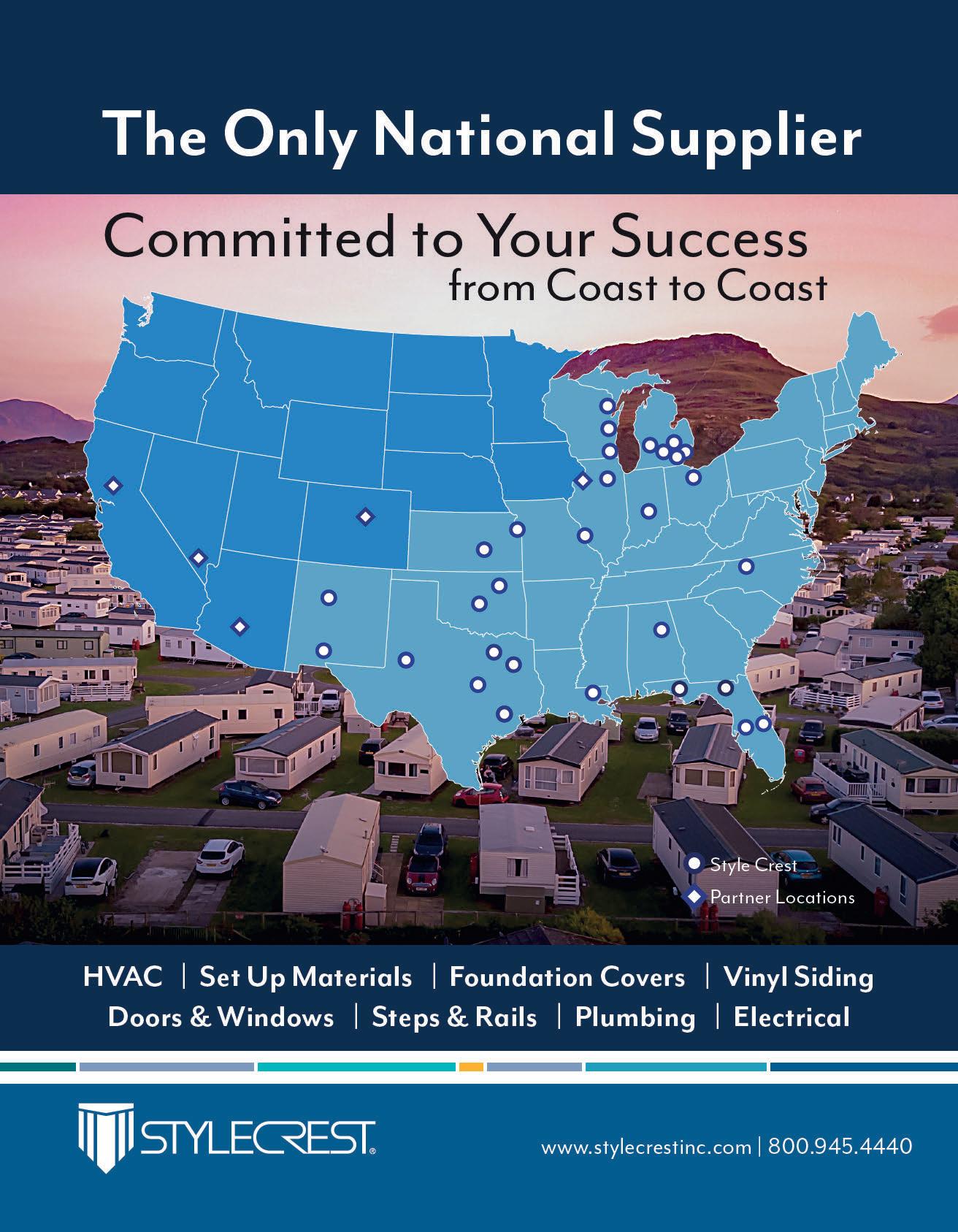
Employment Practices Liability
When it comes to safeguarding your business, it’s important to protect yourself against employee lawsuits. The costs associated with these claims can be staggering and can impact businesses of any size or type. Employment Practices Liability Insurance (EPLI) provides protection against employment practice claims such as discrimination, sexual harassment, wage & hour and wrongful termination. During FY 2020, the EEOC resolved 70,804 charges of employee discrimination, securing $439.2 million for victims in both the private sector and government workplaces.
As the Covid pandemic continues, there is greater opportunity for exposure and an increased need for protecting your business with EPLI. Employers continue to struggle to balance regulatory compliance, respect for the individual rights of employees and ongoing needs of their business as we see 2021 and a 2nd year of Covid coming to a close.
As an employer, you must comply with employment laws and guidelines from regulators including the EEOC, CDC, OSHA, and the ADA.
Why does my manufactured home business need EPLI protection now more than ever?
• Increased Employee Lawsuits: In the last ten years, employee filings with Equal Employment Opportunity Commission have increased - making this an evergrowing risk for employers .
• Settlements are getting more expensive: Not only is the number of employee lawsuits growing, but the amount
By The Risk Management Team of Haylor,
of money paid out as a result of these claims is rising. The average settlement for employment practice claims is now estimated at $70,000.
• Big or small – all companies face risks: Whether your company is large or small or has many or few employees – all businesses should prepare themselves.

• Even if you are not at fault, it can still cost you: Even those businesses that are fault free face legal defense costs and fees are still an associated expense when it comes to employment practices claims. Businesses with EPLI coverage can breathe easy knowing they are covered.
• Covid related incident such as:
• Wrongful Termination: Be mindful of the Families First Coronavirus Response Act when making any employment decisions as to avoid any issues of retaliation.
• Invasion of Privacy: Remember ALL medical information must be kept confidential. Including temperature taking for the purposes of Covid screening. Remember consistency is key. Test everyone equally.

• Unsafe Workplace: OSHA is already getting notifications from employees alleging that their employers failed to comply with local stay-athome orders or health and safety regulations.
Be aware of the terms of your current commercial liability policy and understand that it may not provide coverage. Some Commercial Umbrella policies may also exclude EPLI claims.
Lastly, remember that policies differ from carrier to carrier. Working with an Independent Agent with access to multiple carriers is critical to your business.
Haylor, Freyer & Coon, Inc. has been protecting businesses since 1928. Our team of insurance and risk management specialists can assist with your EPLI coverage, utilizing the numerous carrier relationships we’ve developed over our 93 year history. https://www.haylor. com/ | 800-289-1501
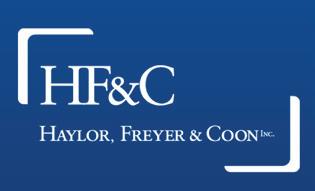
- 19 -
Why Does My Manufactured Home Business Need EPLI Protection Now More Than Ever?
Freyer & Coon, Inc
Does a Pit Bull or Chihuahua Bite Hurt More?
 By Due Diligence Partners
By Due Diligence Partners
Isn’t this one of the topics that keeps every investor up at night?
We’ll approach this with info from the standpoint of the investor and operator...
From a buyer’s perspective: It bites (no pun intended) to get excited about a park only to find out that there is a service dog park-demic. This is one of many reasons that onsite due diligence takes a minimum of two days and a night. If your due diligence process includes walking every square foot of the park, auditing all lots, auditing homes, talking to, and interviewing everyone that wanders your way, then you will find out everything you need to know about the dog situation - GUARANTEED!
Here are just a few of the tricks we use to document our animal sightings. Notice, we said “animal” instead of dog since we’ve encountered everything from ducks to snakes to Llamas.
1. When performing park owned home audits, additionally take a picture of any large animals.
2. When performing park owned home audits, take a picture of anything odd such as multiple empty cages.
3. If there is poo everywhere while walking, make note of it and how many lots it is coming from.
4. Document lots that have large, aggressive, loose, or neglected animals.
5. When speaking to a tenant, ALWAYS present yourself as ADORING of all earth’s creatures. This will result in the tenant become comfortable to provide you with an
abundance of information such as how the tenant recently started their puppy mill or that they pet-sit 20 dogs at a time for their neighbors.
6. Lastly, mitigate your injury liability and economic risk. As an investor, some pet risk for a new purchase may be inevitable, especially if the property checks most other boxes. However, at what point do you draw the line and bail?
Economic risk boils down to predicting ‘how many tenants will bail?’ when you enforce the rules. Determining this will require that you audit market strength and the amount of pet rules being violated. Economic strength will involve auditing tenant turn over with historic rent rolls, evictions reports, and other turn-over materials requested. Your onsite due diligence will uncover how many pet issues there are. Surprisingly, most pet issues are easily resolved, even with some of those tenants that say “f-you, this dog is my baby, and it will always stay with me.” After completing your market strength and violations audit, you can ponder the following - if 25% of your tenants violating the pet rules are lost, would it kill the deal, or not be an issue because of the property’s market strength to replace those tenants?
One extreme example of a “bark-demic” that comes to mindone of our clients dropped a deal because most homeowners purchased emotional support Mastiffs. Not exaggerating much here, most of the dogs were foaming at the mouth, unchained, and unkept. That investor then closed on the next two deals but is happiest about the fact that he dropped the ‘Mastiff’ deal.
To answer the question of this email: A Pit Bull bite hurts more! A Chihuahua just hurts your feelings, and you get to return
- 20 -
Does a Pit Bull or Chihuahua Bite Hurt More? Cont.
home after performing onsite due diligence. DDP’s official pet friendly statement: While we adore and love all animals, some bites hurt more than others. For this reason, proper liability insurance prohibits certain breeds, regardless of whether a particular breed has a good or bad owner.

From an operator’s perspective: Congrats! You closed on the deal, now what?
Let’s introduce an industry expert here to share a few statistics... Kurt Kelly with Mobile Insurance. Mobile Insurance is the largest provider of insurance products to the manufactured housing industry in the nation.

1. Dogs categorized as pit bulls accounted for 60% of all dog bite liability claims in the past five years.
2. Chihuahuas bite more people than pit bulls - they just don’t bite them bad enough to cause notable bodily injury as a general rule - 81% of all dog bites don’t require medical care.
3. Insurance companies will not insure a park owner that divulges he allows any of these breeds of dogs in the park: Pit Bull, Mastiff, Rottweiler, German Shepherd, Chow, Akita, Wolf Hybrid.
4. Insurance companies treat duly qualified emotional support animals as medical devices and are allowed even if they are a prohibited dog.
5. However, landlords can require these owners to have the dogs on a leash full time, always in their control, and they can demand the dogs be removed if they bite or attempt to bite someone.
6. In 2019, the estimated total dog bite liability payouts by insurance companies were approximately $800 million in the US. The average loss payout, including incurred legal fees, is $45k. It’s estimated these numbers increased 300% during 2020 (COVID).
7. 70% of dog bites are by non-neutered animals.
8. 5,800 postal workers were bit by dogs in 2019.
For more information or questions about insurance needs and prevention, contact www.mobileagency.com
We hope we answered the question of which bite hurts more and we left you with some invaluable statistics and due diligence tips.
- 21 -
Your Due Diligence Partners Video Testimonials | The Team Behind These Articles | Report Examples LinkedIn Company Page | LinkedIn DD Group | Facebook Company Page
Debunking a Rule of Thumb

Overview
By Mark Simpson
Interest Rate Plus 3% Does Not Produce 20% Cash-on-Cash Return
Following is a critique of a rule of thumb that is often taught by some of the most prominent manufactured home park owners and instructors in the country. The Rule states that by adding 3% to any mortgage interest rate, an investor will arrive at the magical capitalization rate that will generate a 20% cash-oncash return. However, this rule is mathematically wrong! The application of the 3% Spread Rule will result in overpaying for properties and financial returns well below the target.
Following is an example using the following variables:
Purchase Price: $800,000
Equity (20%): $160,000
Debt (80%): $640,000
Spread: 3.0%
Debt Interest: 5.5%
Amortization Period: 20 years
Monthly P&I: $4,402
Annual Debt Service: $52,830
Capitalization Rate: 8.5%
Target Cash-on-Cash: 20%
Introduction
It’s so simple. Just add 3% to your mortgage interest rate and Shazam, you get your magical capitalization rate. Except, “The Rule” is not correct.
In the manufactured home park industry, there is a rule of thumb that is often professed to help make a quick calculation of the capitalization rate required in order to achieve a 20% cash-on-cash return. It is commonly taught that all you have to do is find a mobile home park and buy it with 70% to 80% debt and have a three point difference between the interest rate on your loan and the capitalization rate you buy the park under.
Calculations
From the preceding, the net operating income can be calculated to be $68,000 by multiplying the purchase price ($800,000) by the capitalization rate (8.5%). Next, the cashon-cash yield can be calculated as follows:

- 22 -
Debunking a Rule of Thumb Cont.
Net Operating Income: $68,000
Less: Debt Service: - 52,830
Cash Flow: $15,170
Cash Flow: $15,170
Divided by Equity: ÷ $160,000
Cash-on-Cash Return: 9.48%
But wait, 9.48% is not 20% cash-on-cash…
Why is The Rule Wrong
The 3% Spread Rule is incorrect primarily because it uses a calculation of simple interest only, rather than realistic calculations of the mortgage terms including: LTV, interest rate, and amortization period, which all impact the capitalization rate and cash-on-cash rate.
What Are the Implications

Using the 3% Spread Rule does not produce a capitalization rate that corresponds with a 20% cash-on-cash return. In fact, the actual cash-on-cash return may be less than half of the 20% target. If a buyer were to rely on this 3% Spread rule of thumb, he/she may be shocked at the actual results of the first year.
Another Way to Calculate
In the appraisal profession, a reliable way to calculate the capitalization rate is by using the Band of Investment Method. This method uses the proportions of debt and equity and their respective capitalization rates as illustrated below. Again, we have applied the variables used in the preceding example:
Mortgage Component
Mortgage % x RM = ___
(RM = mortgage cap. rate or loan constant = annual debt service / mortgage debt)
RM = DS ($52,830) ÷ Debt ($640,000) = 8.25%
Equity Component
Equity % x RE = ___
(RE = equity cap. rate or cash-on-cash rate)

The capitalization rate for the purchase can be calculated using the band of investment method as follows:
Mortgage (80%) x Rm (8.25%) = 6.60%
Equity (20%) % x Re (9.48%) = 1.90%
Capitalization Rate = 8.50%
Further, by using a capitalization rate that is actually lower than our true investment goals would warrant, buyers may overpay for a property. As explained below, the actual capitalization rate that produces a 20% cash-on-cash return is 10.6%, rather than 8.5% recommended by The Rule. This 2.1% (or 210 basis points) error in the capitalization rate equates to an overpayment of $158,491 in our example. The actual purchase price should have been $641,509 to achieve our target. We overpaid by 25%. Could the 3% Spread Rule have something to do with the current compressed capitalization rate environment?
How Do You Achieve 20% Cash-on-Cash
Next, we kept the same debt assumptions and plugged in a variety of cash-on-cash yields increasing from 10% to 20% in
- 23 -
Debunking a Rule of Thumb Cont.
Annual principal reductions are not readily available to investors unless a property is refinanced or sold. Thus, these reductions cannot be considered as available cash flow.
Finally, words mean specific things. If an investor agrees to a 10% cash-on-cash return, it would be a very messy argument for a property owner to subsequently claim that his personal definition includes the return of principal. This argument could lead to all sorts of disputes. The manufactured home industry continues to transform into a conventional investment alternative and the adaptation of conventional financial terms is one part of the process.
Conclusion
The broad conclusion from this analysis is that rules of thumb have no place in making major financial decisions. If an investor relies on a rule of thumb or a “ballpark estimate” in a purchase decision, then he/she deserves the consequences.
order to analyze the resulting capitalization rates. At the cashon-cash rate of 20%, the corresponding capitalization rate was 10.6%. Hence, the 3% spread rule was off by 210 basis points. The capitalization rate needed to be 5.10% higher than the interest rate to achieve 20% cash-on-cash, not 3.0% higher. Please keep in mind that the numbers were calculated with the debt assumptions held constant at a 5.5% interest rate, a 20-year amortization period, and an 80% LTV. The rate matrix will need to be recalculated each time the debt variables are tweaked.

Rebuttal
We have received negative feedback from a staunch proponent of the 3% Spread Rule claiming that “most investors” believe that the cash-on-cash figure should include principal balance reductions along with cash flow, which would legitimize the 3% Rule.
This claim is false for a number of reasons. By definition, cash-on-cash means “the amount of cash flow relative to the amount of cash invested”. This is the definition whether your reference source is Investopedia, The Dictionary of Real Estate Appraisal, or Wikipedia. Synonyms for cash-on-cash include: equity capitalization rate, equity dividend rate, and cash flow rate.
The narrower conclusion is that the 3% Spread Rule should not be applied in making major financial decisions. There is no substitute for old fashioned due diligence and number crunching. The analysis will be greatly enhanced by using the Band of Investment method of capitalization rate derivation. This method will allow the investor to input the debt parameters and the equity return target in order to calculate a true reflection of the appropriate capitalization rate.
Mark D. Simpson holds the MAI designation from the Appraisal Institute and earned an MBA in Finance from the University at Albany. He has appraised commercial properties throughout the U.S. for 32 years and has owned a variety of investment properties since 2003, including his current obsession, the first Agrihood for Manufactured Homes in America. He can be reached at (813) 245-7838 and MarkSimpson@Brighthouse.com
- 24 -
Farmers Specialty | RV Cold Weather
By Jim Gontjes
6 Tips To Prep Your Mobile Home for Winter Winterize Your Mobile Home With These 6 Tips
As we delve deeper into the coldest season, it’s time for mobile homeowners to ensure their dwellings are properly winterized to both minimize the risk of shortterm maintenance surprises and help reduce the chance of costly repairs down the road. Recent winters have broken storm and temperature records, causing significant home damage — and manufactured homes can be more vulnerable to winter elements due to above-ground pipes, according to WZZM 13.
The good news is completing a few tasks now may help protect your home and keep you warmer all season long. Read on for six ways to help prep and protect your mobile home against winter weather.
Insulate, Insulate, Insulate
Adequate insulation is a key component to mobile home winterization. Consider installing insulation that attaches to the inside of your house to both help prevent winter plumbing issues and increase your comfort during cold weather.



Loosen Tie-Downs
If you reside in an area where the ground freezes solid during winter, consider loosening your mobile home’s tie-downs during the winter season. Frozen ground has the ability to shift, which can cause structural damage to your home.
Ensure Adequate Skirting
Skirting attached to the perimeter of a mobile home helps prevent a number of unwanted winter-related mishaps. Skirting helps your home retain heat and provides freeze protection for pipes. It also minimizes snow from building up under the home and assists in keeping out animals and rodents. There are many options for skirting materials — consider one that is most appropriate for your home’s unique needs and climate.
Inspect Your Furnace
Performing routine furnace maintenance jobs, such as replacing disposable furnace filters, cleaning permanent filters and vacuuming dust and dirt, can help ensure your furnace operates safely and efficiently during winter weather. Now is a great time to schedule an annual professional furnace inspection if you’re due for one, which is recommended by many furnace manufacturers.
- 25 -
Consider Hiring an Expert
Depending on your home’s unique history and story, you might consider hiring a professional to winterize your mobile home for increased protection against cold temperatures, weather damage and to help avoid costly repairs.

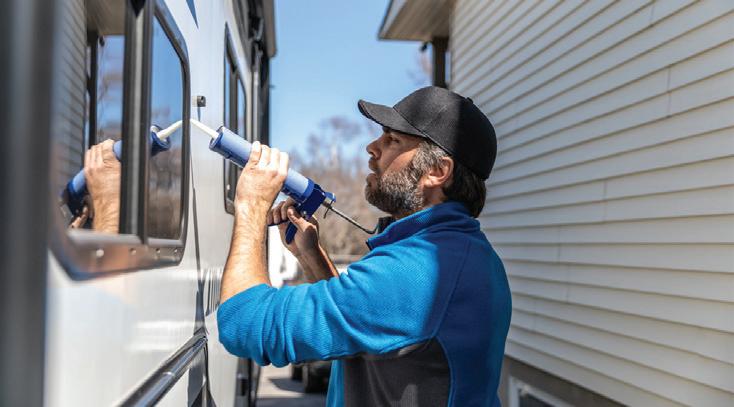

The winter season means more time spent indoors and the increased potential for unexpected weather challenges. Make sure your home is equipped to endure blustery temperatures and help keep you and your family comfortable all season long.
Jim Gontjes Head of Production Management – Specialty Lines Property FARMERS INSURANCE

Seal Doors and Windows
Before cold weather arrives, inspect interior and exterior doors for wear and tear and check that weather stripping seals are intact. To provide additional winter protection, help retain more heat and prevent drafts, apply caulk to gaps in your home’s windows and doors.
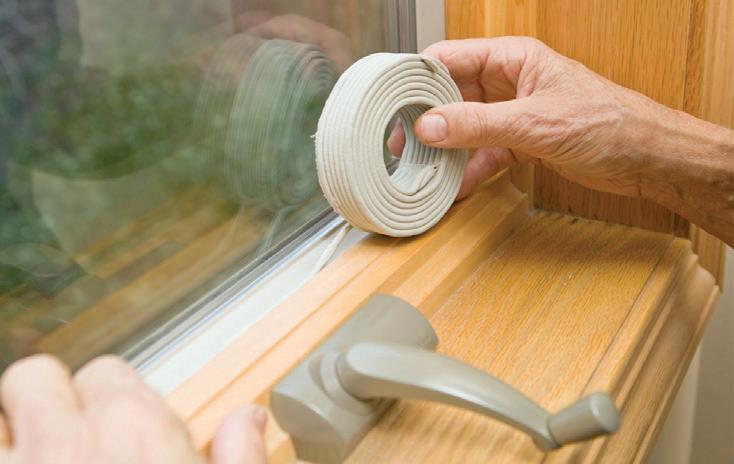
- 26 -
Farmers Specialty | RV Cold Weather Cont.
How Appraisers Are Growing Manufactured Housing By Paul Barretto

As more of the homebuying population discovers the affordability of today’s manufactured homes, the demand for manufactured homes titled as “real property” will continue to grow. To keep up with such demand, it is important that the residential home appraisal industry understand the value of today’s manufactured housing.
that exist. One such policy is the ability for appraisers to use site-built comparable homes when valuing CrossModTM, CHOICEHomeTM, and MH AdvantageTM-eligible homes. There is a progression that appraisers can apply when determining suitable comparable properties. For example, if there are no comparable CrossModTM or CHOICEHomeTM-eligible homes (which is often the case), it’s appropriate to use site-built homes.
While the responsibility of determining a home’s market value falls upon the appraiser, the industry can help. Manufacturers, lenders, and retailers/dealers can provide the appraiser with information and facts that will help them make an informed decision. Most appraisers welcome the additional information. As more CrossModTM, CHOICEHomeTM, and MH AdvantageTMeligible homes are sold, more of them will show up in the MLS and can be used as comparable properties.
As we enter an era where the old stigmas are dying, they are instead being replaced with quality, efficiency, and curb-appeal that comes with today’s manufactured homes.
What appraisers, homebuyers, realtors, and lenders need to know is that manufactured homes are REAL homes. When placed on a permanent foundation and on owned land, they qualify for conventional mortgages and appraise similarly to site-built homes. However, those facts are often muddled by misinformation and misperceptions. To address this confusion, Freddie Mac and Fannie Mae, the nation’s largest buyers of manufactured homes titled as real property, are focusing on ensuring appraisers have the appropriate information and resources to accurately value manufactured homes as more lenders provide conventional financing on these factory-built homes. Their work is directly related to the growth of manufactured housing, as it allows them to buy more manufactured home loans (think billions of dollars).
Freddie Mac has teamed up with the Appraisal Institute, the industry’s largest association, to create the foundation to inform appraisers, with over 3,000 appraisers completing the program. They expect the number will continue to grow. Fannie Mae is also doing its part by creating online training resources in partnership with McKissock Learning. Both expect to continue the momentum.

As more appraisers go through the training and educational programs, the larger the population that can appropriately value today’s manufactured homes leveraging the policies
Freddie Mac and Fannie Mae intend to continue doing its part in staying current, updating its manufactured housing policies and guidance for appraisers. They also commit to continue communicating through educational resources, training, and outreach. With more appraisers leveraging such resources, they will be doing their part in the growth of today’s manufactured housing.
Paul Barretto is the Executive Director for LearnMH where he is responsible for the organization’s growth and strategic development as a resource for positive change in the offsite factory-built housing industry. He also serves as the Executive Director and Owner of Manufactured Housing Initiatives, a consulting group focused on the success of factorybuilt housing. Prior to his roles with LearnMH and Manufactured Housing Initiatives, Paul spent 20 years at Fannie Mae and wrote its manufactured housing underserved market plan for the Duty to Serve and developed its manufactured housing Single-Family business strategy. paul@learnmh.com

- 27 -
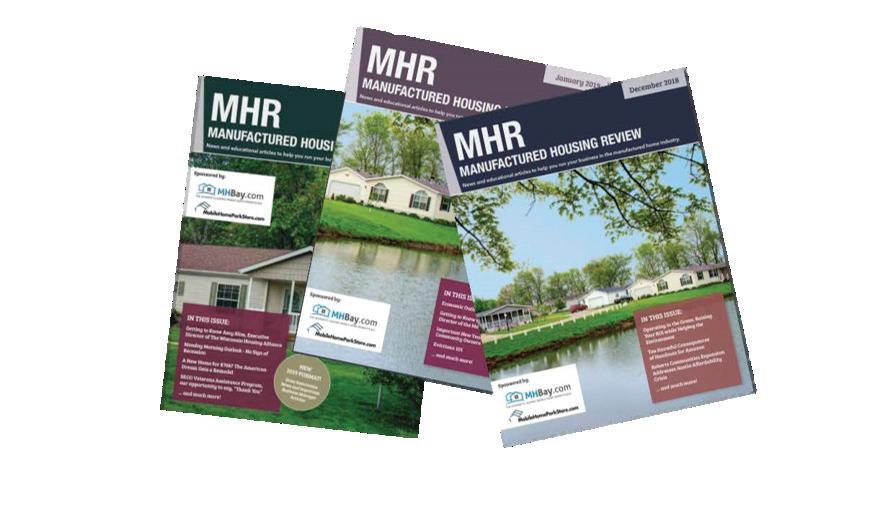
MHR MANUFACTURED HOUSING REVIEW We are an electronically delivered quarterly magazine focused on the Manufactured Housing Industry. From Manufactured Home Community Managers, to Retailers, to Manufacturers, and all those that supply and service them, we supply news and educational articles that help them run their businesses. ManufacturedHousingReview.com Communications regarding any alleged offending, inappropriate, inaccurate or infringing content should be directed immediately to kkelley@manufacturedhousingreview.com along with the communicator’s contact information. Have something to contribute or advertise? Email us at staff@manufacturedhousingreview.com










 www.mobileagency.com
www.mobileagency.com

 By David Jones and Bryan Pope
By David Jones and Bryan Pope





 By Michael K Elson
By Michael K Elson





































 By Due Diligence Partners
By Due Diligence Partners


















